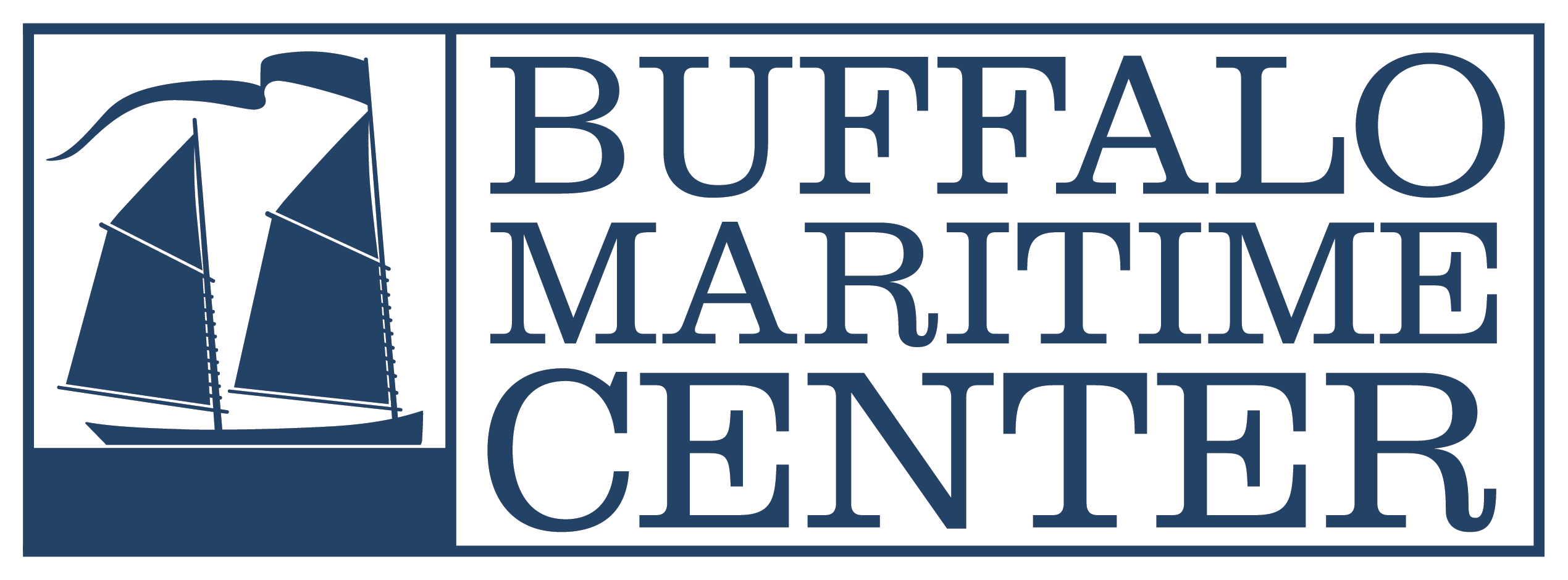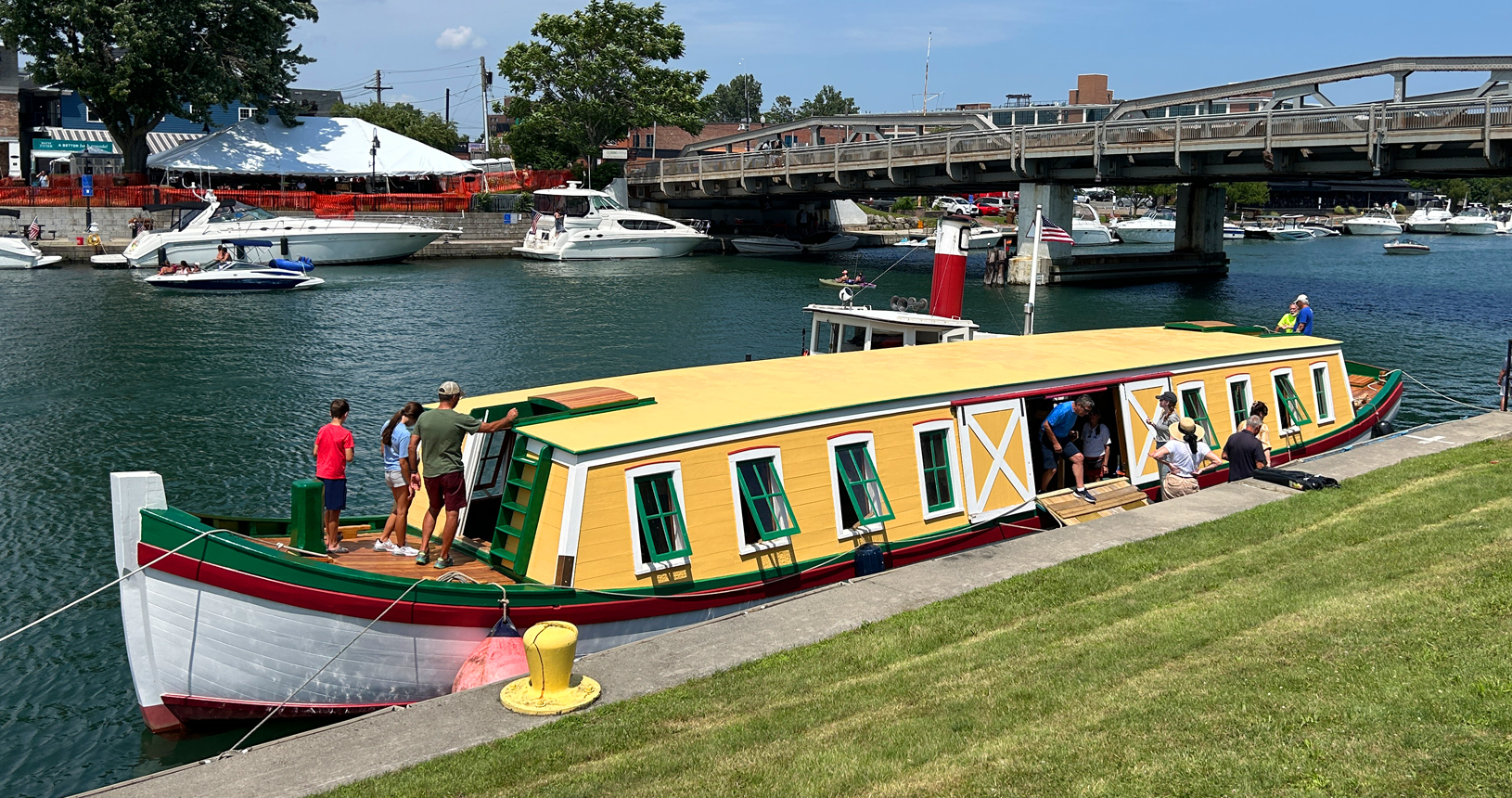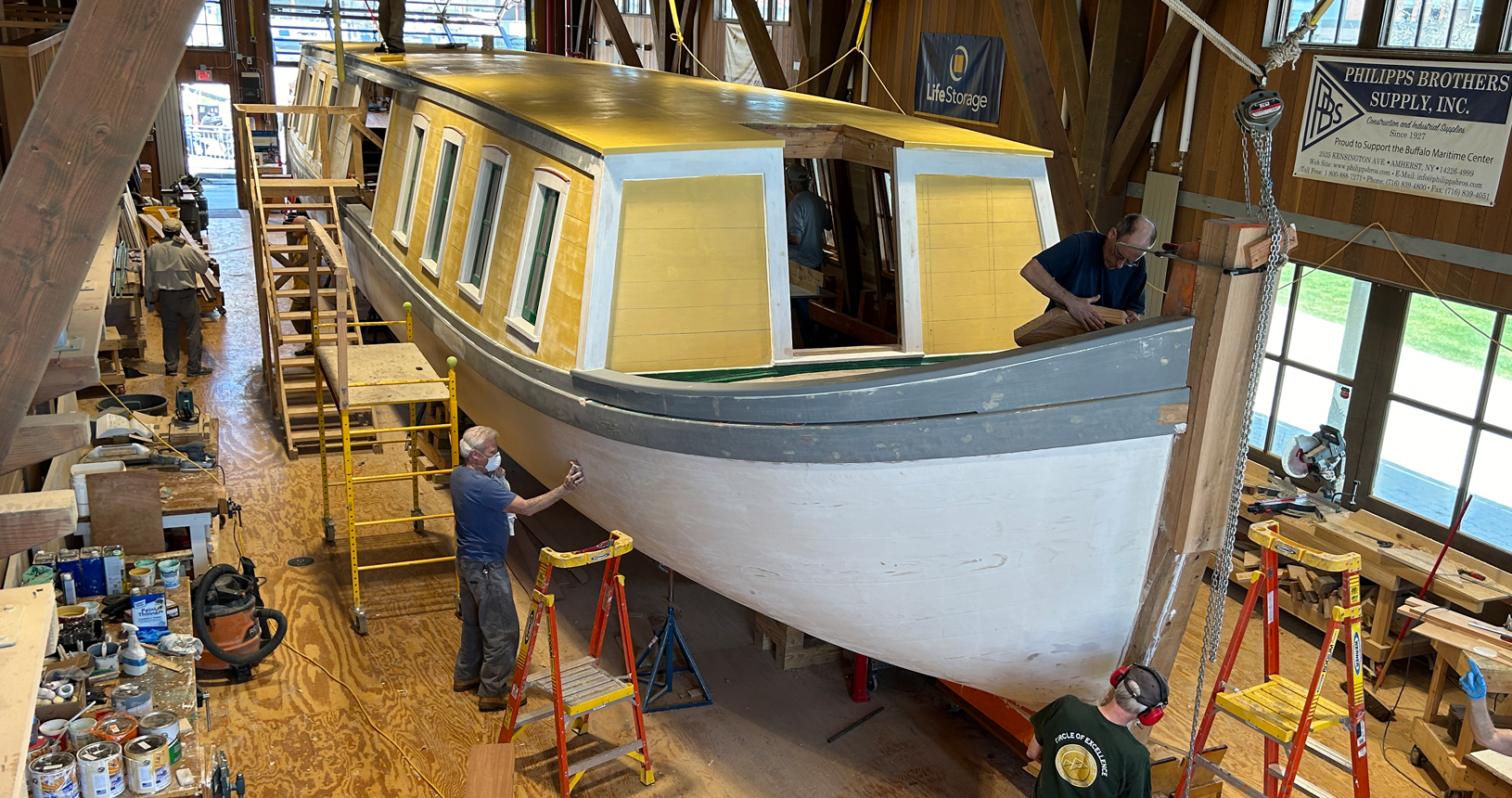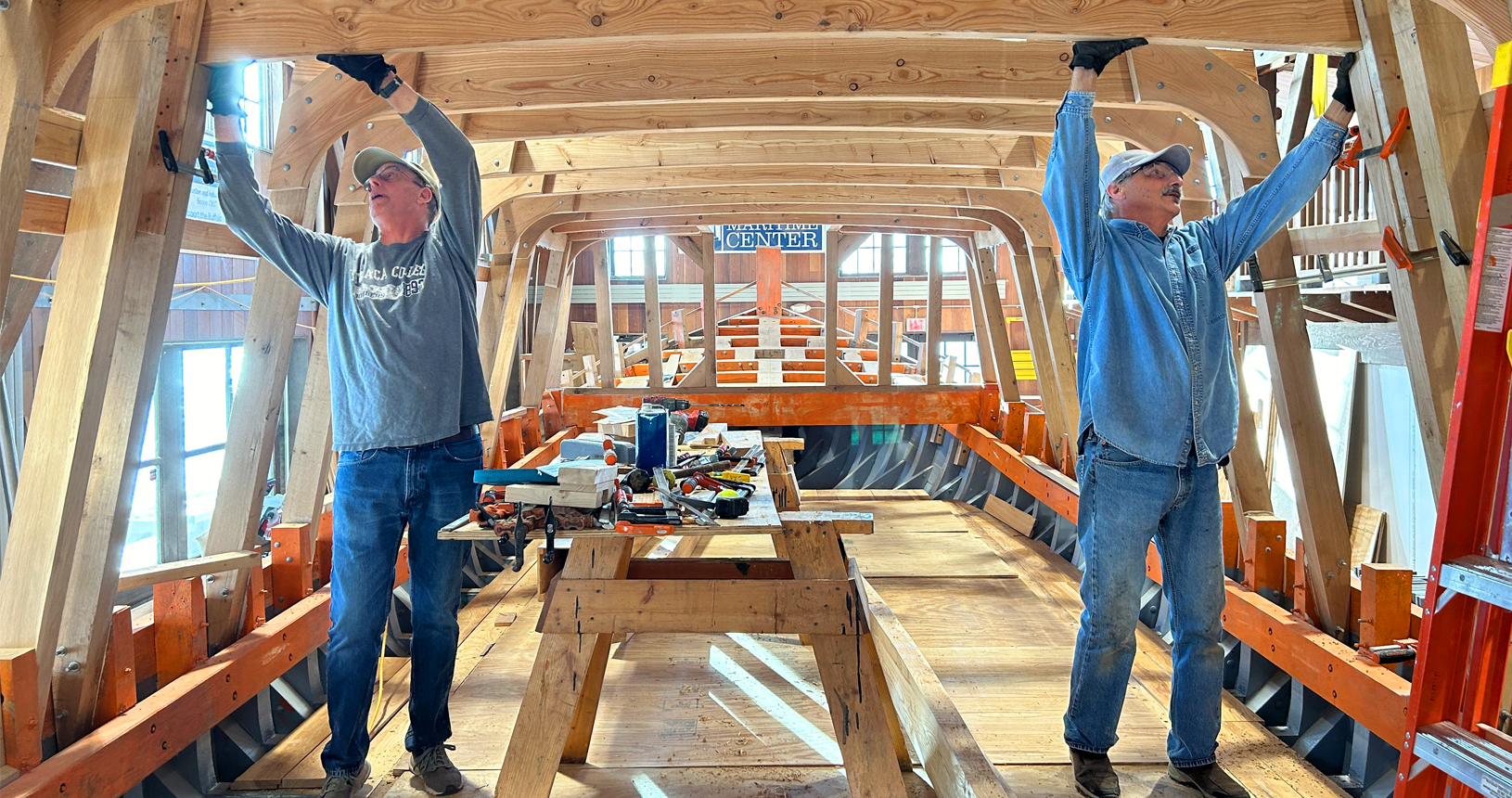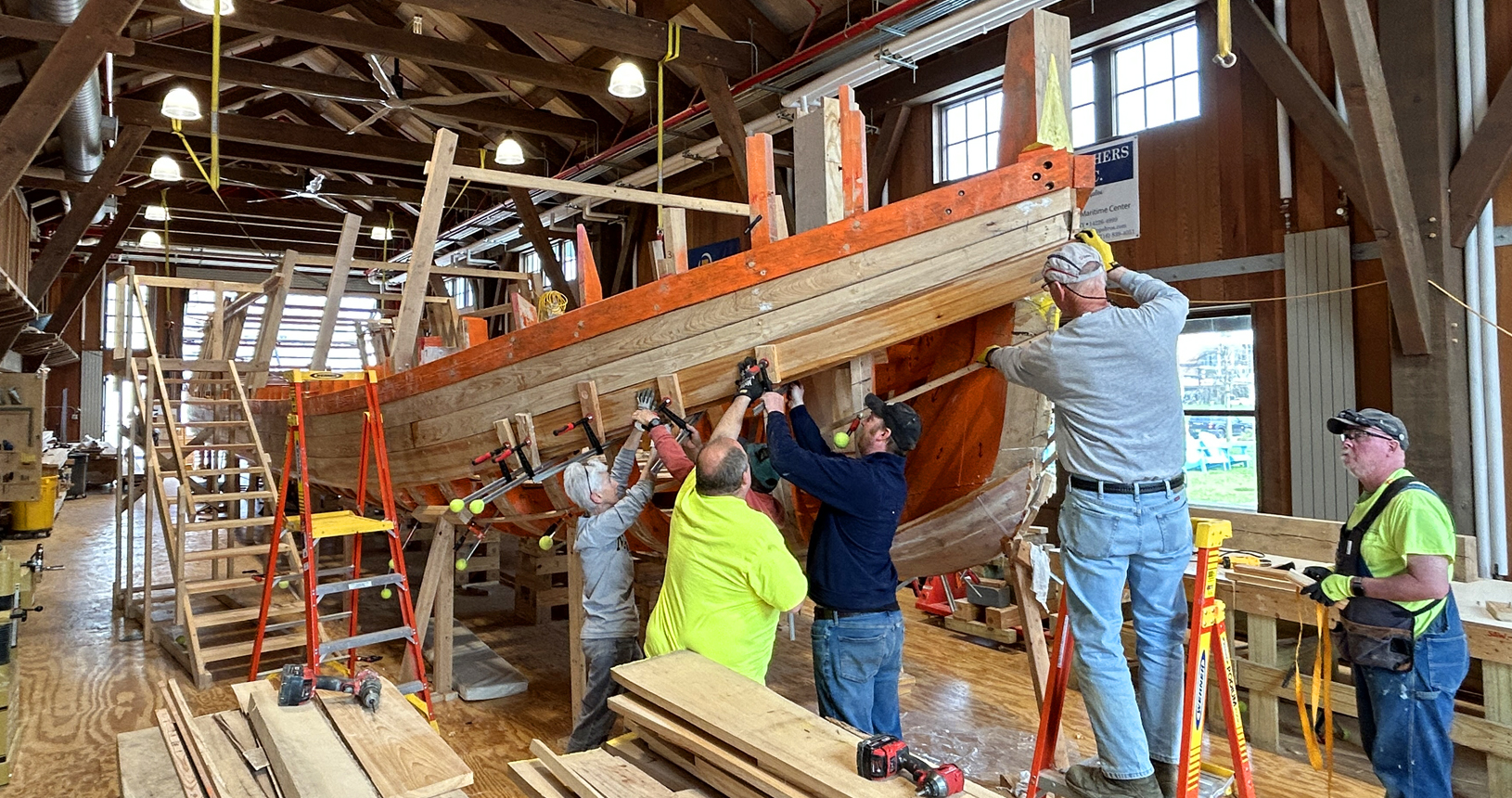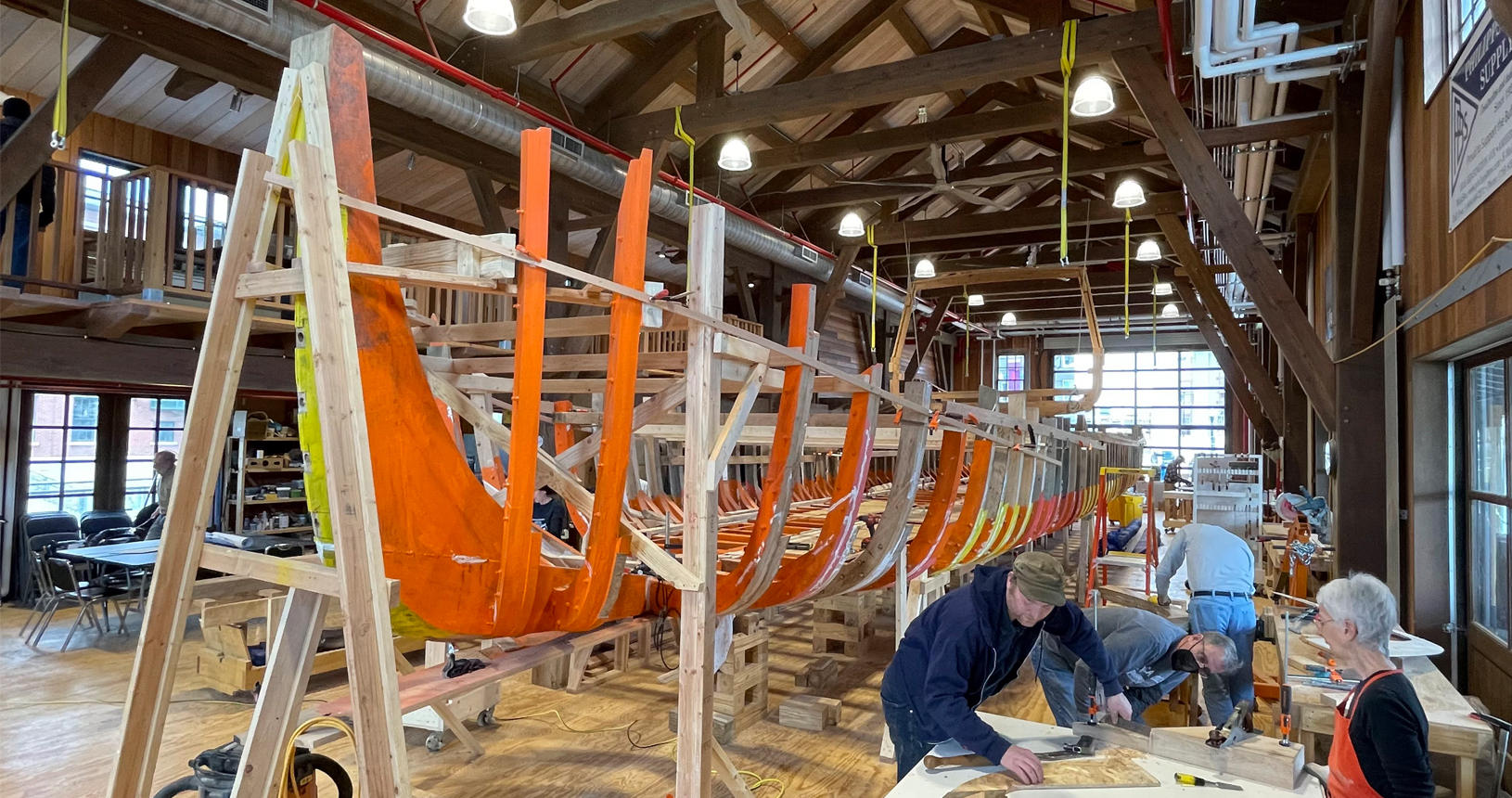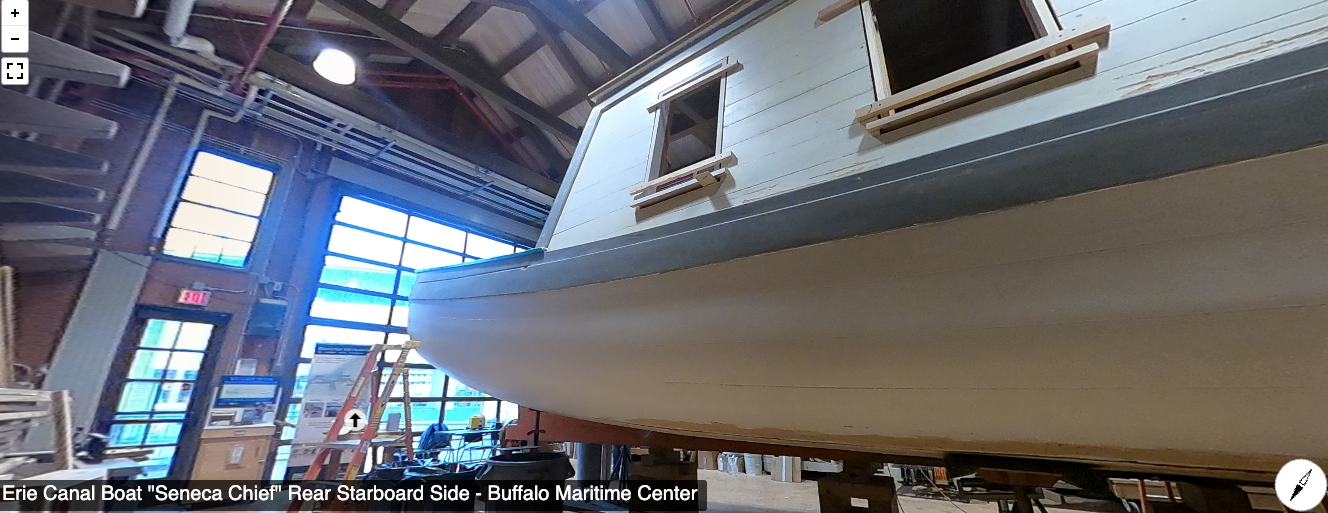ERIE CANAL BOAT SENECA CHIEF
The Erie Canal Boat Seneca Chief: A Community Boatbuilding Project
The Buffalo Maritime Center has constructed a full-sized replica of the Erie Canal Boat Seneca Chief, which first traversed the Erie Canal upon its opening in 1825. From its inception, the Erie Canal Boat Project has sought to engage the community through interactive, hands-on activities and historical discovery. This ambitious community boatbuilding initiative, brought to life by hundreds of volunteers, took place inside the Longshed at Canalside on Buffalo’s waterfront from October 2020 to June 2024. Now docked in the Commercial Slip beside the Longshed during the spring/summer months, the Seneca Chief is open for public viewing, where visitors can watch volunteers add the final touches to this historic recreation.
On September 24, 2025, the Erie Canal Boat Seneca Chief will embark on the Bicentennial Voyage from Buffalo to New York Harbor, commemorating Gov. DeWitt Clinton’s 1825 inaugural journey. This voyage offers Buffalo and communities across New York State a chance to explore the past and plan for the future.
For full details of the Bicentennial Voyage, including the voyage itinerary, map, and scheduled events along the route, click here.
Objectives: Preserving Craftsmanship, Inspiring Conversation
A key objective of the Erie Canal Boat Project is to collaborate with the community in teaching and preserving traditional boatbuilding skills. By engaging volunteers, students, and partner organizations, the project ensures that these time-honored techniques are passed down to future generations.
Beyond craftsmanship, the project aims to foster awareness and dialogue about the Erie Canal’s lasting impact on people and places in New York State and across the country. Drawing inspiration from the boat’s name, Seneca Chief, the Buffalo Maritime Center is committed to broadening the historical narrative - highlighting not only the canal’s economic influence but also its cultural and environmental consequences. By telling a more comprehensive story, this initiative strengthens connections within the community and encourages meaningful reflection on the canal’s legacy.
Crafting the Vessel: A Volunteer-Driven Effort
This project was one of the largest community boatbuilding endeavors in the world and one of the few being constructed on public display. From the beginning, the public was encouraged to become part of the project by volunteering to help build and act as public greeters. Many students and partner organizations had the opportunity to work on the boat and contribute to this enormous community build. Over 200 volunteers were actively engaged in the project, and with only two professional shipwrights leading the build, it was a true volunteer-driven effort.
Building the Seneca Chief allowed us to practice, teach, and preserve traditional boatbuilding skills. The boat’s keel, frames, and other structural timbers were made of white oak. The keelson was a single 60-foot-long piece of reclaimed Douglas Fir. This rare timber, generously donated by Higgins Erectors & Haulers, was previously used in the early 1900s as a gin pole crane.
The planking consisted of two layers of 1-inch-thick cypress with a waterproof dynel cloth set in epoxy between the layers. The outer layer of planking was caulked with cotton in the traditional manner. This combination of modern and traditional planking methods was designed to help the boat stay watertight even if it spent winters out of the water.
All of the bolts used in the backbone structure were forged in the BMC’s own machine shop by a crew of volunteers. This crew also produced several specialized tools and hardware needed to build the boat.
The cabin’s interior was outfitted with cabinet-grade hardwood and finished in a style consistent with the 1820s; it measures 73 feet long and weighs 40 tons.
Virtual Tour of the Construction
Click on the image below to take a virtual tour of the construction of the Erie Canal Boat Seneca Chief at the Longshed building at Canalside.
This community boatbuilding project was made possible by the generous support of the David & Joan Rogers Family Foundation, NYS Canal Corp., Erie Canal Harbor Development Corporation, and the Erie Canalway National Heritage Corridor.
The Idea
The Design
The Keel
Cutting the Keelson
BPO Aboard the Erie Canal Boat Seneca Chief
